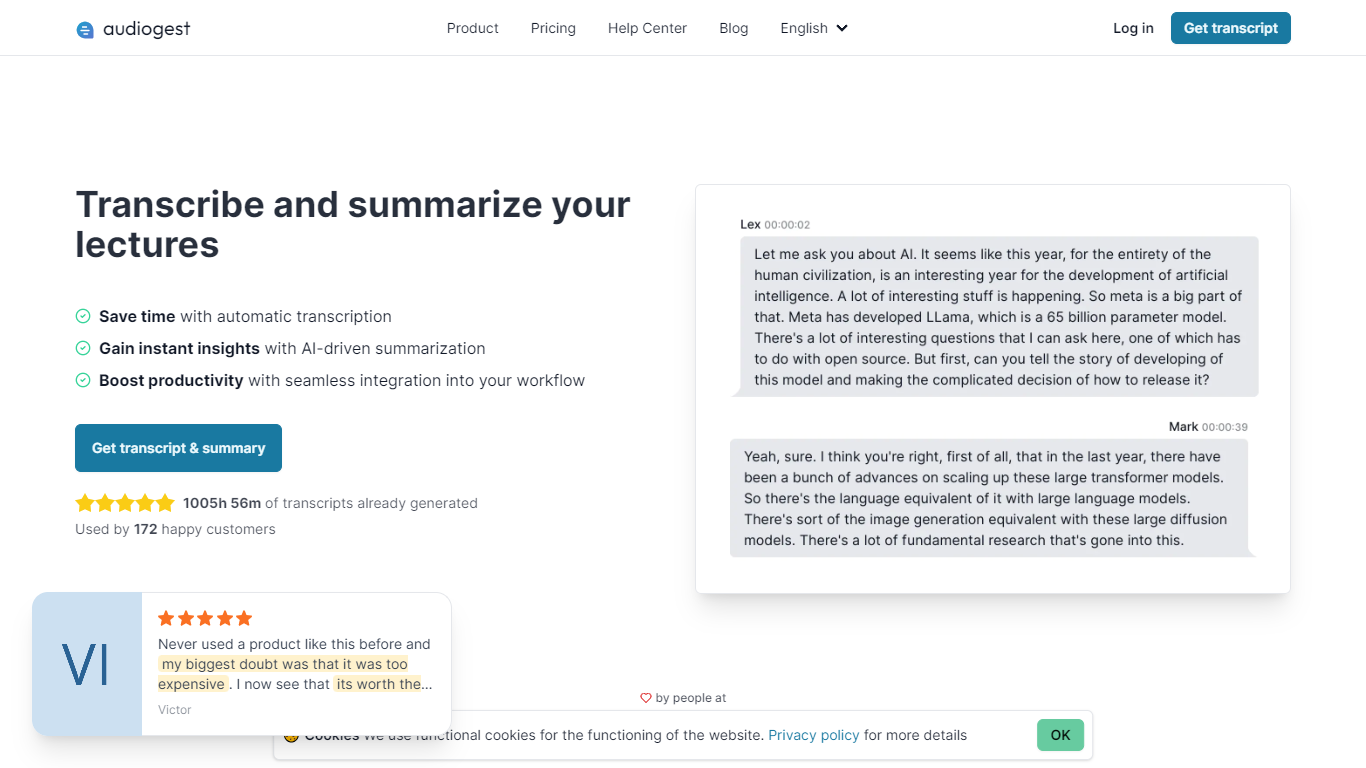Audiogest vs Typeset
Compare Audiogest vs Typeset and see which AI Summarizer tool is better when we compare features, reviews, pricing, alternatives, upvotes, etc.
Which one is better? Audiogest or Typeset?
When we compare Audiogest with Typeset, which are both AI-powered summarizer tools, With more upvotes, Typeset is the preferred choice. Typeset has 25 upvotes, and Audiogest has 6 upvotes.
Disagree with the result? Upvote your favorite tool and help it win!
Audiogest

What is Audiogest?
Discover the power of Audiogest, a state-of-the-art tool designed to transcribe and summarize your audio and video files effortlessly. Audiogest harnesses the latest AI technology to convert your interviews and conversations into accurate text transcription while delivering instant AI-driven summaries to extract the core insights swiftly.
With support for over 99+ languages, including Dutch, German, French, Spanish, and Hindi, Audiogest caters to a global audience. It stands out by allowing uploads of any audio and video file type, ensuring flexibility and compatibility across various recording platforms like Zoom, Google Meet, Teams, and Whatsapp. Audiogest doesn't just streamline your workflow by integrating with essential apps; it also allows you to edit transcripts, fix small errors, update speaker labels, and export the transcript in multiple formats.
Offering a straightforward pricing model, Audiogest requires no subscription, charging a clear €4 per hour of transcript with a rapid 5-minute turnaround time. Embrace productivity and focus on what you do best by leveraging the simplicity and efficiency of Audiogest today.
Typeset

What is Typeset?
Your platform to explore and explain papers. Search for 270M+ papers, understand them in simple language, and find connected papers, authors, topics.
Audiogest Upvotes
Typeset Upvotes
Audiogest Top Features
Efficient Transcription: Convert audio and video to text effortlessly with Audiogest's AI.
Rapid Summarization: Gain instant insights with the AI-driven summarization of your recordings.
Multi-language Support: Transcribe content in over 99 languages, encompassing a broad user base.
Easy Editing: Fix errors and refine transcripts with easy editing options and multiple export formats.
Seamless Integration: Enhance productivity by integrating with popular apps and services.
Typeset Top Features
No top features listedAudiogest Category
- Summarizer
Typeset Category
- Summarizer
Audiogest Pricing Type
- Freemium
Typeset Pricing Type
- Free
